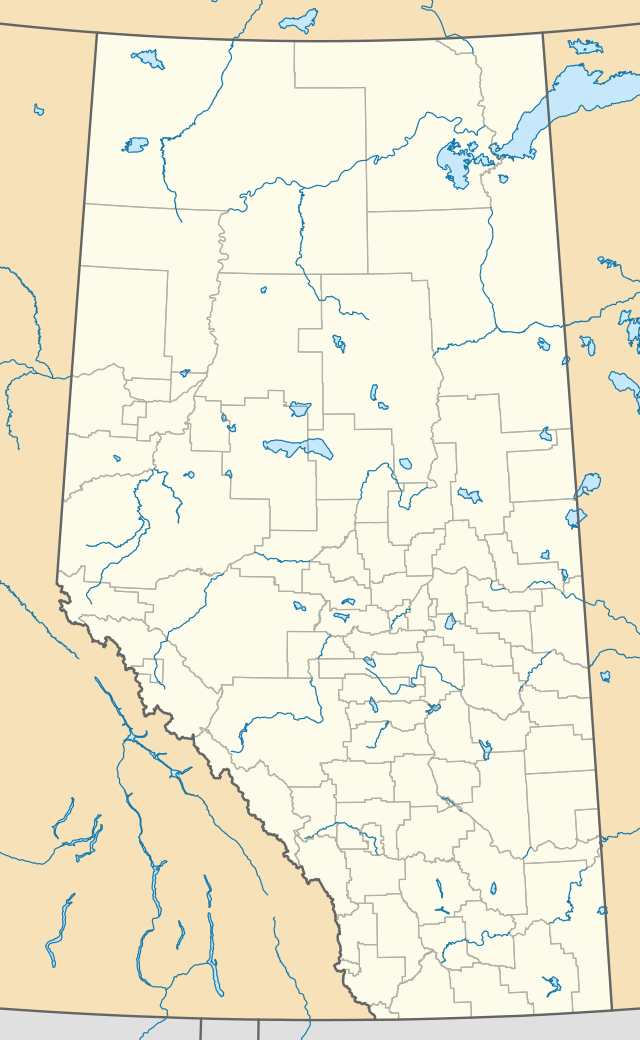Hill Spring
Hill Spring is a village in southern Alberta, Canada. It is located 32 km (20 mi) west of Cardston and 43 km (27 mi) southeast of Pincher Creek, in the foothills of the Canadian Rockies.
Hill Spring | |
|---|---|
| Village of Hill Spring | |
| Motto(s): Prairie to Peak Perfection | |
 Hill Spring | |
| Coordinates: 49°17′27″N 113°37′26″W | |
| Country | |
| Province | |
| Region | Southern Alberta |
| Census Division | 3 |
| Municipal district | Cardston County |
| Incorporated[1] | |
| • Village | January 1, 1961 |
| Government | |
| • Mayor | Monte Christensen |
| • Governing body | Hill Spring Village Council |
| Area (2016)[2] | |
| • Land | 0.96 km2 (0.37 sq mi) |
| Elevation | 1,175 m (3,855 ft) |
| Population (2016)[2] | |
| • Total | 162 |
| • Density | 168.6/km2 (437/sq mi) |
| Time zone | UTC-7 (MST) |
| Area code(s) | 403 |
| Highways | Highway 800 |
| Waterways | Waterton River, Waterton Reservoir |
| Website | Official website |
History
Hill Spring was founded in 1910 by Church of Jesus Christ of Latter-day Saints leader Edward J. Wood.
Demographics
In the 2016 Census of Population conducted by Statistics Canada, the Village of Hill Spring recorded a population of 162 living in 74 of its 92 total private dwellings, a -12.9% change from its 2011 population of 186. With a land area of 0.96 km2 (0.37 sq mi), it had a population density of 168.8/km2 (437.1/sq mi) in 2016.[2]
In the 2011 Census, the Village of Hill Spring had a population of 186 living in 78 of its 83 total dwellings, a -3.1% change from its 2006 population of 192. With a land area of 1.11 km2 (0.43 sq mi), it had a population density of 167.6/km2 (434.0/sq mi) in 2011.[3]
Notable people
Nathan Eldon Tanner, who served in the Alberta Legislature and the First Presidency of The Church of Jesus Christ of Latter-day Saints, lived and taught school in Hill Spring.
See also
References
- "Location and History Profile: Village of Hill Spring" (PDF). Alberta Municipal Affairs. October 21, 2016. p. 358. Retrieved October 23, 2016.
- "Population and dwelling counts, for Canada, provinces and territories, and census subdivisions (municipalities), 2016 and 2011 censuses – 100% data (Alberta)". Statistics Canada. February 8, 2017. Retrieved February 8, 2017.
- "Population and dwelling counts, for Canada, provinces and territories, and census subdivisions (municipalities), 2011 and 2006 censuses (Alberta)". Statistics Canada. February 8, 2012. Retrieved February 8, 2012.